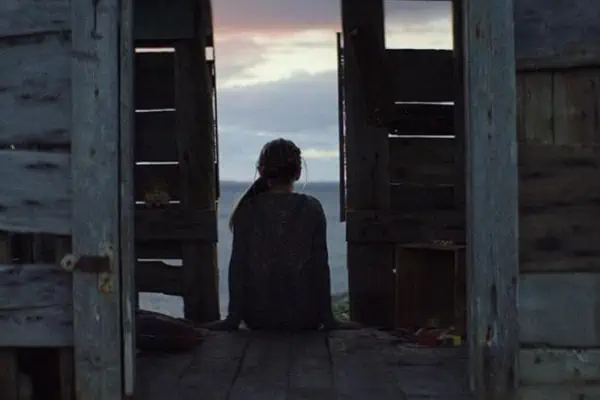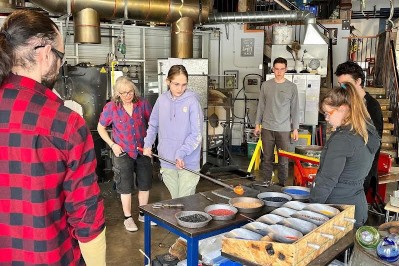Ark Terry sees himself almost as an interpreter.
As a filmmaker who has documented rapid changes in both the Arctic and Antarctic regions, his goal is to make complex scientific information about global warming and climate change understandable, especially to policy-makers.
“We’ve got to remember that policy-makers are just politicians, which means they’re kind of like me and you,” Terry says.
“It’s very difficult for them to wade through this material to know what needs to get done, and to put into law things that need to get done.”
Terry made headlines in 2009 when his film, The Antarctica Challenge: a Global Warning, was the only film chosen for screening to world leaders at the COP 15 climate change conference in Copenhagen, Denmark.
He shot a subsequent film, The Polar Explorer, during a three-week trip to Canada’s high Arctic in 2010 aboard the Coast Guard research vessel, the CCGS Amundsen.
That film earned the Toronto explorer-journalist the 2011 Gemini humanitarian award, and was screened for delegates at the United Nations’ climate change conference in Cancun, Mexico.
Terry will be in Whitehorse next week as the Yukon Research Centre at Yukon College and the Yukon Arts Centre jointly present both films.
Terry’s interest in exploration began as a child, when an older brother took him on outings to Toronto’s Don Valley in search of rocks and other interesting items.
But it was a trip to Alaska, seeing a collapsing glacier with his sons, that piqued his interest in what was happening to the world’s polar regions, especially the Far North.
“We saw the ice calving off and crashing into the water. It was about six seconds later before we heard it, because of the way the sound carries. I just thought this was a fascinating phenomenon, and I wanted to find out more,” he says.
Icebergs “like independent little floating sculptures that you don’t expect to see in an Arctic environment.” PHOTO: Courtesy Polar Cap Productions
“I just thought, ‘What an unusual part of the planet we have, that very few people knowanything about’. I often say it’s the closest thing to visiting another planet without leaving Earth.”
What surprised him most on his filming excursions was the rapid pace at which the polar ice is deteriorating.
He embarked on his 2010 Arctic trip prepared (“maybe over-prepared”) for very cold October temperatures in October.
After all, when Norwegian explorer Raold Amundsen made the first crossing of the Northwest Passage less than 100 years ago, it took three years to get through the dense ice.
“We did the same trip in three weeks,” Terry says.
“We breezed right through without seeing any ice at all. It wasn’t until we got up to latitude 76 that we began to see any kind of ice.”
Terry and his crew were the first to capture close-up footage of one recent, and alarming, phenomenon.
“On August 25, 2010, a big chunk of ice representing 25 percent of the entire Petermann Glacier on the west coast of Greenland, broke off and slid down the rocks into the sea and floated into Canadian waters,” he recounts.
“That piece of ice at the time was five times the size of Manhattan. It was an extremely large iceberg—in fact, so big that the scientists refer to it as an ice island rather than an iceberg.”
Such a massive slide, he explains, is due to the endothermal reaction from the sun beaming down on rocks exposed by retreating glaciers.
“So now we’re getting glaciers that are melting from underneath as well as on top. That’s basically doubling the degenerative process, so we’re getting big chunks of ice breaking off and sliding in. That’s really accelerating the rising sea crisis.”
In just five years, he says, Arctic scientists witnessed a 40 percent decline in sea ice.
“That’s almost half of all the sea ice in the Arctic. That’s incredible over a short period of time.”
One effect of that melting is that roughly the first 40 metres of surface water is now virtually salt-free.That, combined with changes in the direction of the Gulf Stream currents and increased growth of phytoplankton, means that many new species of marine life are emigrating to the Arctic.
“The sea ice is removed and the sun is hitting the water. So you’re getting additional photosynthesis, and that’s providing a huge buffet for these new creatures.”
As Terry’s film demonstrates, some of those species—such as the strange-looking “acorn worm”—were previously unknown to the scientific community.
While reduced polar ice makes transportation and scientific research easier, Terry considers rising sea levels “the most imminent and urgent crisis” of the climate change issue.
“All that melting land ice is contributing to the rise of the sea levels and to the desalinization of the oceans. That’s going to wreak havoc on all of us, directly,” he says.
The Polar Explorer and The Antarctica Challenge: a Global Warning will screen at the Yukon Arts Centre on Thursday, March 22 at 7 p.m., followed by a question and answer session with the filmmaker.
For more on this story, see our Web Exclusive, “Changes North and South” atold.www.whatsupyukon.com.




